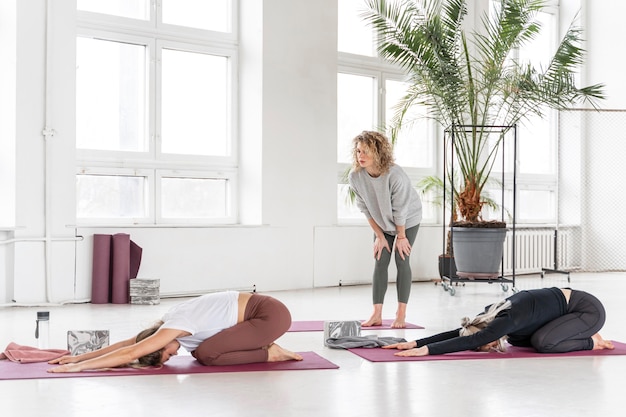
Yoga isn’t just about being flexible; it also boosts memory, heart, and bone health. Brits are now spending around £790 million each year on yoga classes and equipment. The practice is not only becoming quirky, with versions like rage yoga or dog yoga, but its real benefits are increasingly backed by science. UCLA researchers discovered that a three-month yoga and meditation program was more effective than memory exercises for reducing age-related brain issues. Other studies found it improved sleep in breast cancer survivors.
Lucy Edge, once an advertising executive, turned to yoga instead of antidepressants during a deep depression. She took a six-month break to learn yoga in India, which brought her happiness and contentment. Now, she’s written books about yoga and runs Yoga Meds, a site featuring over 300 clinical trials on yoga’s benefits.
If you’ve relied on crossword puzzles and Sudoku for memory training, consider yoga. UCLA research showed that a 12-week yoga and meditation course improved memory, reduced depression and anxiety, and increased stress resilience in adults over 55. Participants practiced one hour of Kundalini yoga weekly and 20 minutes daily of Kirtan Kriya meditation, which involves chanting and visualizing light.
Yoga can be as effective as traditional exercises like walking for heart health. A review in the European Journal of Preventative Cardiology indicated that yoga helps lower heart disease risk. Reducing stress through yoga can reduce blood pressure and heart rate, both linked to heart problems. Dr. Mike Knapton from the British Heart Foundation notes yoga’s benefits for emotional health, anxiety, and stress—common issues for those with heart conditions.
For stress relief, consider Restorative yoga, which involves supported postures held for several minutes to give the nervous system a break. Another option is a series of gentle yoga poses for stress reduction outlined by Charlotte Watts in her book “The De-Stress Effect.”
Yoga is also beneficial for back pain. Sarah Shone, a physiotherapist and yoga teacher, developed yoga classes that became part of a rehabilitation program for back pain, with 87% of participants reporting pain relief. Yoga can improve incontinence by targeting pelvic floor muscles and increasing bone density.
Starting with yoga? Inform your teacher about any health issues and choose a gentle style like Hatha or Iyengar yoga. If you have specific conditions like back pain, consult your doctor about a subsidized yoga course through an exercise referral scheme.
Choosing a good yoga mat can make a difference. Consider where you’ll use it, its weight for portability, length for your height, and thickness to protect your joints. Healthista recommends the Valka Yoga Elephant Cork mat, which is eco-friendly, durable, and has a natural rubber base for comfort.
For those who sweat, cork mats are advantageous as they become grippier when wet and resist odors. This mat comes with a carry strap and offers a 15-day money-back guarantee and a one-year warranty. Additionally, a matching cork yoga block can aid in difficult poses, providing stability and grip.
You don’t need to be flexible to benefit from yoga. For a relaxing experience, try Yin or Restorative yoga with supportive props. For a more energetic session, opt for Vinyasa Flow, where postures and breath link in a dance-like sequence. Iyengar yoga focuses on precise posture alignment and uses props, making it beginner-friendly. Anusara yoga combines alignment with flowing movements, often set to music, for a feel-good practice. Yoga Therapy, practiced by specially trained teachers, can help heal injuries or illnesses.




